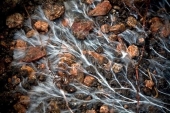



Ben Zumeta wrote:More diverse soil constituents will usually work better. Any habitat with more diverse food and shelter will have more biodiversity than those with less. I would be concerned about biocide contamination with most straw though.
M Ljin wrote:
John Suavecito wrote:How do you know if what you are adding are indigenous microbes? Under a native tree?
John S
PDX OR
“Indigenous microorganisms” is I believe a term from Korean natural farming that refers to microbes from wild forest soils.
John Suavecito wrote:How do you know if what you are adding are indigenous microbes? Under a native tree?
John S
PDX OR
John Suavecito wrote:I don't know how one would increase indigenous microbes instead of other ones. It's an interesting idea.
John S
PDX OR


Gurkan Yeniceri wrote:Korean Natural Farming is established by Cho Han Kyu after he studied natural farming in Japan. He mixed the Korean cuisine with farming practices to come up with cheap solutions for farmers.
Later he and his son established JADAM (not an abbreviation) which means "People that resemble nature" to help farmers to produce high yield without using corporate fertilizers.